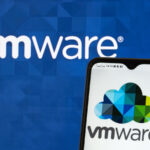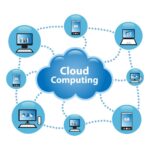
IT organizations are under pressure to further reduce the cost of IT operations, increase service levels, stay compliant and reduce risk while improving visibility into financial and operational decisions. And they must do so with IT infrastructures that are more complex, hybrid and sophisticated than ever before.
Managing change, whether driven by business or functional requirements or operational reasons (lifecycle management, patching, risk management…), is becoming proportionately more complex. To cope, the IT department needs strong management disciplines supported by integrated tools. To be able to manage change safely, taking into account everyone’s requirements, it is necessary to arm oneself with the necessary information to make the right decision.
Managing IT changes
The introduction of agile delivery of digital solutions and DevOps workflows, combined with the adoption of native and public cloud-hosted cloud architectures, has also changed the role of the change management discipline. These are deployed at a much faster pace, almost continuously, and traditional change management concepts need to be rethought. In the agile world, pre-approved standard changes are becoming the norm rather than traditional changes in the traditional way of working. This does not mean that the control function of change management is no longer needed, but that understanding and visibility of all these changes becomes more important. This information requires automated change discovery and detection solutions that are integrated into the DevOps value stream.
The move to DevOps introduces an additional challenge with respect to operational changes: the use of infrastructure as code (IaC) by agile development teams – using provisioning tools such as Terraform, for example – leads to increased sprawl, opacity, and even compliance issues if not governed properly, as these teams will no longer use or only partially use the consumption and compliance pathways put in place by IT. Overcoming these challenges requires a governance solution that has safeguards around the use of IaC. These then ensure that the infrastructure changes applied by agile teams are tracked, including their costs and expenses against budget, and that these changes are valid in light of IT compliance rules.
Inventory assets for controlled change management
Managing changes to the physical, virtual, financial and contractual aspects of IT assets on-premises or in the public cloud requires robust inventory, IT asset management (ITAM), software asset management (SAM) and cloud financial management policies as part of a broader enterprise service management (ESM) solution for IT organizations. No one likes unexpected expenses or fines related to software usage. Organizations need to manage software licenses across all IT platforms, including those hosted in the public cloud, to moderate licensing costs and reduce the risk of non-compliance. An up-to-date inventory of hardware and software across all IT environments is an essential foundation and can only be achieved effectively and efficiently through automated discovery, cost tracking and change management.
Another salient issue is how IT can contribute to corporate environmental goals as part of its ESG policies. Accurate visibility into all IT assets and their relationships, preferably with integration data from data center infrastructure management (DCIM) tools that monitor environmental metrics, can facilitate decision making for infrastructure consolidation, transformation, lifecycle management and more to reduce the carbon footprint.
Control and track
So, do we need to change? Absolutely. But change must be controlled, tracked and governed, and it must be done within the modern DevOps value stream. IT operations management solutions must provide the capabilities to do this: discover all hardware and software assets and their relationships, enable enterprise service management, including cloud design and deployment, ITAM and SAM. Support agile teams by providing continuous, real-time compliance and cost management for IaC-based changes. Service assurance and observability solutions further provide a feedback loop in the planning phase of the DevOps chain. This closes the loop and new changes can be undertaken.
In today’s agile way of working, IT change has become one of the “permanent” elements of the continuous everything paradigm, requiring constant visibility, cost tracking, and compliance validation.


